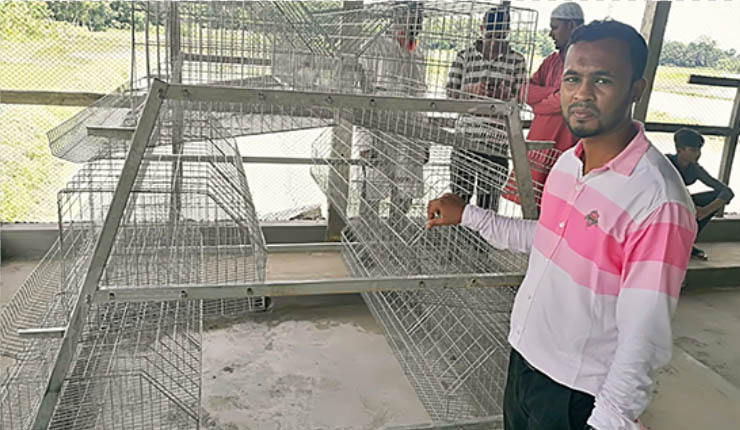fish feed pelleting machine
ធ្នូ . 10, 2024 04:46 Back to list
fish feed pelleting machine
The Importance of Fish Feed Pelleting Machines in Aquaculture
In recent years, the aquaculture industry has experienced exponential growth due to the rising global demand for fish as a primary source of protein. One of the critical components of successful aquaculture is the quality and efficiency of fish feed production. This is where fish feed pelleting machines play a pivotal role. These machines not only enhance the nutritional value of fish feed but also improve its palatability and digestibility, ultimately leading to healthier fish and increased yield.
Understanding Fish Feed Pelleting
Pelleting is a process that converts powdered feed ingredients into pellets through mechanical processing. This involves mixing raw materials, moistening the feed, and then applying heat and pressure through a pelleting machine. The resulting feed pellets are uniform in size and shape, making them easier for fish to consume, and they minimize feed wastage, which is crucial for maximizing profitability in aquaculture operations.
Benefits of Using Pelleted Fish Feed
1. Improved Nutritional Value Pelleting helps to bind the nutrients in fish feed more effectively, ensuring that fish receive a balanced diet. The process also allows for the incorporation of vitamins, minerals, and other supplements that can enhance growth rates and immune response in fish.
2. Enhanced Feed Efficiency Studies have shown that fish fed pelleted diets gain weight more efficiently compared to those fed powdered feed. This increased feed conversion ratio (FCR) means that less feed is required to achieve the same growth rates, ultimately reducing costs for fish farmers.
3. Reduced Water Pollution Pelleted feed produces less leaching into the water compared to loose feed. This means that fewer nutrients are lost to the surrounding environment, leading to improved water quality in aquaculture systems. Cleaner water translates to healthier fish, and helps mitigate potential environmental impacts.
4. Customization Fish feed pelleting machines can be adjusted to create specific pellet sizes and densities tailored to different fish species. Whether for fry, fingerlings, or adult fish, precise control over the pelleting process allows producers to meet the diverse dietary needs of various aquatic species.
fish feed pelleting machine

The Technology Behind Fish Feed Pelleting Machines
Modern fish feed pelleting machines employ advanced technologies that enhance their efficiency and output. Features such as stainless steel construction ensure durability and resistance to corrosion, while high-capacity pellet mills can produce large volumes of feed in a shorter time frame. Furthermore, some machines have integrated grinding systems, which allow for the simultaneous processing of raw ingredients and pelleting, streamlining production and reducing operational costs.
Intelligent control systems optimize the pelleting process by monitoring parameters such as temperature, moisture content, and pressure. This not only ensures consistent pellet quality but also enhances the energy efficiency of the operation. Additionally, some machines offer die and roller designs that can be customized to produce specific pellet sizes and shapes, catering to different market needs.
Challenges and Considerations
While fish feed pelleting machines offer numerous advantages, there are challenges associated with their use. The initial investment in machinery can be significant, and the operational costs related to power consumption and maintenance also need consideration. It is essential for fish farmers to conduct thorough research and possibly seek expert advice to choose the right machinery for their specific needs.
Moreover, keeping up with the latest advancements in pelleting technology is crucial, as innovations can lead to better efficiency and lower costs. Regular training for operators on the effective use of these machines can also contribute to improved productivity and product quality.
Conclusion
Fish feed pelleting machines are indispensable in the modern aquaculture industry. They not only enhance the nutritional quality of feed but also promote environmental sustainability and economic viability. As the global demand for fish continues to rise, the importance of efficient and effective feed production methods like pelleting will only increase. Therefore, investing in the right pelleting technology is not just a decision of efficiency but also a step towards sustainable aquaculture practices that can support the growing population while preserving aquatic ecosystems.
-
High Performance Exhaust Fan – Efficient Ventilation Solutions for Home
NewsJun.10,2025
-
High-Quality Gestation Pen for Sows Durable Mobile Pig Pen & Simple Pig Pen Solutions
NewsJun.10,2025
-
High Quality Rabbit Cage Double Tier Designs & Welded Wire Mesh Supplier
NewsJun.10,2025
-
Floating Fish Feed Machine - High Efficiency Floating Fish Feed Extruder for Small Scale Production
NewsJun.10,2025
-
Premium Poultry Housing Solutions Mobile & Commercial Free Range Options
NewsJun.10,2025
-
Industrial FRP Fans Corrosion-Resistant Blades & Centrifugal Systems
NewsJun.09,2025






